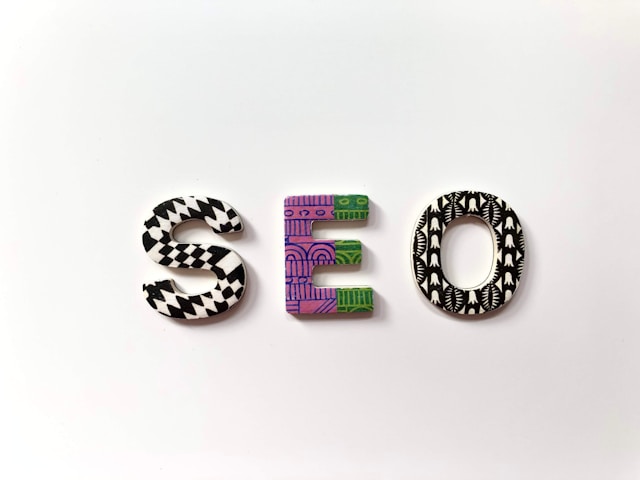In the vast world of SEO, title tags are vital in helping websites stand out in the crowded space of search engine results pages (SERPs). These snippets of text, appearing as clickable blue links, serve as the first impression a site makes on potential visitors. Crafting the perfect title tag is both an art and a science, balancing brevity with relevance to capture user interest and comply with search engine guidelines.
Understanding the nuances of title tags is crucial for anyone looking to improve their website’s visibility and click-through rate. With search engines like Google considering title tags as a significant factor in ranking pages, it’s clear why mastering this element can be a game-changer. This introduction delves into the essentials of title tags, highlighting their importance and impact on SEO strategies.
Understanding Title Tags
Title tags serve as a concise preview of a webpage’s content, pivotal in guiding both users and search engines through the web’s vast information landscape. Think of them as the headline of a newspaper article; they must be captivating enough to draw readers in, yet accurate and informative to reflect the article’s content. In Search Engine Optimization (SEO), title tags are crucial, acting as a direct line of communication with search engines like Google.
A title tag is essentially a snippet of HTML code specifying a web page’s title. In their simplest form, title tags appear within the <title> element in the HTML document head, setting the stage for how a page is represented in search engine results pages (SERPs) and in the browser tab. This feature isn’t just a matter of technical SEO; it’s a critical component of a website’s user experience and click-through rate (CTR).
Given their importance, it’s vital that title tags accurately describe a page’s content. Misalignment between the title tag and page content detracts from the user experience and undermines a website’s credibility and search engine ranking. Google’s algorithms have evolved to prioritize the relevance and clarity of title tags, considering them a significant factor in indexing and ranking.
The relationship between a title tag and an H1 tag is also worth noting. While the title tag acts as the SERP headline, the H1 tag serves as the main heading on the actual webpage. These elements should work together, delivering a cohesive message that enhances SEO and user navigation. By ensuring that title tags and H1 tags are in harmony, website owners can avoid the confusion that might impede Google’s understanding of a page’s content.
Mastering the art of title tag optimization is a strategic endeavor that can significantly impact a website’s visibility and engagement metrics. A well-crafted title tag is an indispensable tool in the digital marketer’s toolkit, as it guides both users and search engines through the content.
Crafting the Perfect Title Tag
Crafting the perfect title tag is more of an art than a science. It must combine relevance, clarity, and engagement in under 60 characters. A well-constructed title tag serves as a critical tool for SEO, directly influencing both search engine ranking and click-through rates. To achieve this, several best practices should be considered.
First, ensure the title tag is relevant to the webpage’s content. The title must reflect the page’s core message or value proposition, guiding both users and search engines. This relevance boosts SEO performance and enhances user experience by setting clear expectations.
Second, incorporate the target keyword at the beginning of the title tag when possible. Placement matters, and having your main keyword upfront can improve the page’s search engine visibility for that specific term. However, it’s important to do this naturally, avoiding keyword stuffing, which can detract from readability and engagement.
Third, maintain brevity while being descriptive. The ideal length for a title tag is between 50 to 60 characters to ensure the entire title is visible in search results without being cut off. This limit encourages precision and creativity in describing the webpage’s content.
Fourth, differentiate your page. Considering the competitive nature of search results, make your title tag stand out with unique descriptors or value propositions that entice users to click your link over others.
Fifth, use branding wisely. This method typically places the brand name towards the end of the title tag. It focuses on the primary message or keywords while still associating the page with your brand.
Finally, testing and optimization are key. Regularly reviewing the performance of your title tags in terms of click-through rates and search rankings can offer insights into what works best for your audience. Adjusting and experimenting with different formulations can uncover the most effective strategy for your website’s visibility and user engagement.
By adhering to these practices, title tags become a powerful element of a webpage’s SEO strategy, directly contributing to improved search engine ranking, user satisfaction, and overall website performance.
Implementing Title Tags on Various Platforms
Improving a website’s search engine optimization (SEO) and user experience depends on how well title tags are used across all platforms. Each platform has its method of setting up title tags, yet the core principles remain consistent: relevance, conciseness, and keyword inclusion.
WordPress
WordPress users benefit from a user-friendly interface for managing title tags. By navigating to the SEO section provided by plugins like Yoast SEO or All in One SEO, users can easily customize their title tags for each post and page. These plugins also offer recommendations for optimizing title tags, ensuring they are of the appropriate length and include the main keyword.
Shopify
Setting title tags for e-commerce sites on Shopify can significantly impact product visibility. Within the Shopify dashboard, users can find the ‘Edit Website SEO’ section under each product, collection, or page detail. Here, they can input custom title tags, including brand names and relevant keywords, to improve search ranking and attract potential customers.
Squarespace
Squarespace simplifies the process of editing title tags through its Page Settings menu. Users can enter a custom title tag that accurately reflects the page’s content by selecting the SEO tab. Squarespace encourages using specific and descriptive titles, enhancing user navigation and SEO.
Wix
Wix prioritizes SEO and simplifies title tag management via the Site Manager. Users can access the SEO (Google) tab within Page Settings to customize their title tags. Wix also provides SEO tips and best practices, guiding users to create more effective and engaging title tags that drive traffic.
Adapting title tags across different platforms ensures that a website stands out in search results, attracting more clicks and traffic. By focusing on creating title tags that are descriptive, keyword-rich, and tailored to each platform’s guidelines, websites can improve their SEO performance and engage their target audience more effectively.
Advanced Tips and Tricks
Adapting title tags for optimal SEO performance extends beyond basic practices, necessitating innovative strategies to outpace competitors. Recognizing the nuance in creating captivating title tags involves a deeper understanding of user intent and search engine algorithms. Advanced tips and tricks can significantly boost a web page’s visibility and user engagement.
Utilize Branding Effectively
Incorporating branding toward the end of title tags can increase recognition while maximizing space for primary keywords at the beginning. This strategy ensures that the essential elements of the title are visible in search results, enhancing click-through rates (CTR).
Embrace Dynamic Tagging
For websites with a wide array of content, dynamic title tags can automate customization based on the page content. However, it’s crucial to maintain control over how these tags generate to ensure they remain relevant and click-worthy.
Conduct A/B Testing
To refine title tags further, A/B testing offers empirical data on what resonates with the target audience. Testing different versions of title tags on similar pages can unveil wording, length, and keyword placement preferences, providing actionable insights for broad application.
Leverage Current Events and Trends
Aligning title tags with current events, trending topics, or seasonal interests can temporarily boost visibility and relevance. This approach requires timely updates and keen insight into audience interests to remain effective.
Implement Rich Snippets
While not a direct component of title tags, rich snippets enhance the overall search appearance. By providing additional information such as ratings, reviews, or prices, web pages can stand out, indirectly improving the effectiveness of title tags.
When applied diligently, these advanced techniques can transform average title tags into powerful tools for SEO success. By continuously evolving title tag strategies, websites can maintain competitive advantages, attract more clicks, and convert visitors into customers.
Conclusion
Mastering the art of title tag optimization is a game-changer in the digital marketing landscape. Businesses can significantly boost their online presence by integrating best practices with innovative strategies like dynamic tagging and leveraging trends. It’s not just about following guidelines but creatively using title tags as a tool to stand out in a crowded digital space. With the right approach, testing, and adaptation, title tags can become a cornerstone of SEO success, driving more traffic and conversions. Remember, the journey doesn’t end with creating a perfect title tag; it’s an ongoing process of refinement and experimentation to keep up with the ever-changing online environment.










